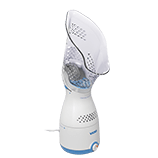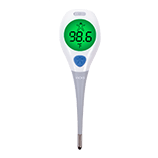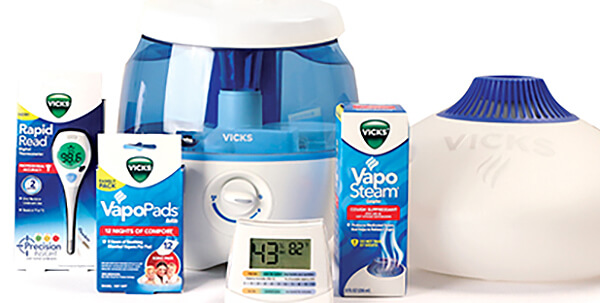
- Products
- Resources
-
-
Vicks products are available for purchase online and in-store at most major retailers.
-
-
- Support
-
-
VICKS SUPPORT
View product-specific FAQs & videos
-
-
- Products
- Resources
- SUPPORT
- Warranty Registration
- Contact Us
The Benefits of Using an Air Mist Humidifier for Optimal Indoor Air Quality
Maintaining optimal indoor air quality is essential for both physical health and overall well-being, and one effective tool for achieving this is the air mist humidifier. According to the Environmental Protection Agency (EPA), indoor air can be up to five times more polluted than outdoor air, making the need for a controlled environment critical.

A study published in the Journal of Environmental Health found that proper humidity levels, ideally between 30-50%, can significantly reduce airborne viruses and allergens, promoting a healthier living space. Air mist humidifiers not only help to regulate humidity but also support respiratory health by alleviating dry skin, throat irritation, and allergy-related symptoms.
By creating a more comfortable atmosphere and mitigating health risks associated with poor air quality, an air mist humidifier emerges as a practical solution for enhancing the quality of indoor environments, especially in homes and offices.
5 Key Advantages of Air Mist Humidifiers for Enhanced Indoor Air Quality
Air mist humidifiers offer several key advantages that significantly enhance indoor air quality, making them an ideal choice for improving your living environment. One of the primary benefits is their ability to alleviate dry skin and chapped lips, common issues in low-humidity conditions. By adding moisture to the air, these devices can help relieve discomfort associated with dry air, especially during the winter months when heating systems often reduce humidity levels drastically.
Moreover, using an air mist humidifier can promote better sleep quality. Many people suffer from sore throats and nasal congestion due to dry air, both of which can be mitigated by maintaining optimal humidity levels. This addition to your bedroom can create a more comfortable atmosphere conducive to restful sleep.
**Tips:** When using a humidifier, ensure that the humidity level in your space remains between 30% and 50% to prevent mold growth and other issues. Additionally, it’s crucial to clean your humidifier regularly to avoid the buildup of bacteria and ensure that you're breathing the healthiest air possible. Consider placing the humidifier in a central location for the best distribution of moisture throughout the room.

4 Ways Air Mist Humidifiers Reduce Allergens and Improve Health
Air mist humidifiers offer an effective solution for enhancing indoor air quality, particularly for those prone to allergies or respiratory issues. One significant benefit is their ability to reduce airborne allergens. When humidifiers introduce moisture into the air, they help to weigh down dust, pet dander, and other particulates, preventing them from floating around and being inhaled. This can lead to a cleaner and healthier living space.
Additionally, air mist humidifiers can improve respiratory health by alleviating dry air symptoms. Dry air can irritate the throat and nasal passages, making it easier for allergens to cause discomfort. By maintaining optimal humidity levels, these devices create a more favorable environment for breathing, minimizing the risk of allergy flare-ups and colds.
**Tips:** To maximize the effectiveness of your air mist humidifier, consider placing it in the most used rooms, like the living room or bedroom. Regularly clean the unit to prevent mold and bacteria growth, and opt for distilled water to reduce mineral buildup. Keeping indoor humidity levels between 30% and 50% helps ensure health benefits without excessive moisture that can encourage mold growth.

3 Scientific Studies Supporting the Use of Air Mist Humidifiers in Home Environments
Air mist humidifiers are increasingly recognized for their role in enhancing indoor air quality, backed by various scientific studies. Research published in the Journal of Environmental Health highlights that maintaining optimal humidity levels between 30% and 50% can reduce respiratory infections and allergies. The study indicates that when humidity levels drop below 30%, the mucous membranes in our respiratory tract dry out, making us more susceptible to pathogens.
Moreover, a study conducted by the American Journal of Respiratory and Critical Care Medicine found that air mist humidifiers can alleviate symptoms for individuals suffering from asthma and bronchitis. By introducing moisture into the air, these humidifiers help in diluting allergens and fine particulate matter, leading to improved lung function and reduced asthma attacks, especially in winter months when indoor heating tends to dry the air.
Furthermore, according to a report by the Environmental Protection Agency, investing in air mist humidifiers can also mitigate the risk of dry skin and other discomforts associated with low humidity. The study suggests that maintaining proper humidity not only benefits respiratory health but also contributes to overall well-being, particularly in home environments where people spend a significant amount of time.
6 Essential Features to Look for in the Best Air Mist Humidifiers for Optimal Performance
When selecting an air mist humidifier to enhance indoor air quality, several essential features should be prioritized. First, adjustable humidity settings allow users to customize moisture levels according to the changing needs of their space, ensuring comfort and preventing excessive dampness. Second, a built-in hygrometer can provide real-time measurements of humidity levels, helping users maintain optimal conditions effortlessly.
Another critical feature is a quiet operation mode, which ensures that the humidifier can function seamlessly in bedrooms or workspaces without disturbing daily activities. Additionally, a large water tank capacity can reduce the frequency of refills, promoting convenience, especially in larger rooms. Finally, considering the ease of cleaning is important, as regular maintenance helps prevent mold and bacteria buildup, ensuring the humidifier contributes positively to overall air quality. By keeping these features in mind, users can select the best air mist humidifier to enhance their indoor environment effectively.
The Benefits of Using an Air Mist Humidifier for Optimal Indoor Air Quality - 6 Essential Features to Look for in the Best Air Mist Humidifiers for Optimal Performance
| Feature | Description | Benefits | Sample Value |
|---|---|---|---|
| Cool Mist Technology | Releases a fine mist of cool vapor into the air. | Helps maintain a comfortable temperature. | Yes |
| Auto Shut-off | Automatically turns off when water level is low. | Prevents damage and ensures safety. | Yes |
| Adjustable Humidity Levels | Allows users to set desired humidity levels. | Optimizes indoor air quality. | 30% to 70% |
| Filter System | Removes impurities from water before misting. | Improves air quality and protects health. | Anti-bacterial filters |
| Whisper-quiet Operation | Designed to operate quietly to avoid noise disruption. | Ideal for use during sleep or work. | 25 dB |
| Easy to Clean | Designed for straightforward maintenance and cleaning. | Prevents mold and bacteria build-up. | Detachable components |
2 Common Misconceptions About Air Mist Humidifiers and Their Real Benefits
When considering the use of an air mist humidifier, many individuals may fall prey to common misconceptions that detract from their potential benefits. One prevalent myth is that humidifiers solely contribute to increased indoor humidity levels without additional advantages. In reality, maintaining optimal humidity levels—ideally between 30% to 50%—can significantly improve respiratory health, as noted in a study by the American Society of Heating, Refrigerating, and Air-Conditioning Engineers (ASHRAE). Proper humidity levels can help mitigate dry skin, relieve allergy symptoms, and reduce the risk of airborne infections.
Another misconception is that air mist humidifiers require excessive maintenance and can worsen indoor air quality. While it's true that any humidification system demands routine care, modern air mist humidifiers are often designed with advanced filtration systems to minimize dust and allergens. According to the Environmental Protection Agency (EPA), maintaining adequate humidity can actually inhibit the proliferation of certain airborne pathogens, thus enhancing indoor air quality. With regular maintenance, these devices can provide refreshing mist without compromising your home's environment, helping you breathe easier and feel more comfortable year-round.
The Benefits of Using an Air Mist Humidifier for Optimal Indoor Air Quality
Related Posts
-
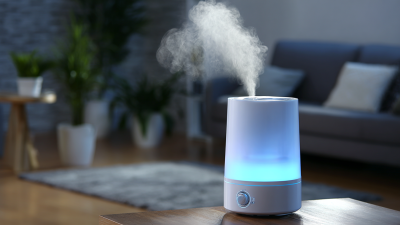
How to Choose the Right Cold Water Humidifier for Your Home
-

Experience Superior Quality with China's Leading Export in Small Warm Mist Humidifiers
-
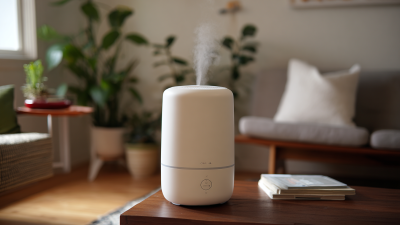
7 Essential Tips for Choosing the Best Hot Humidifier for Your Home
-

How to Choose the Best Warm Humidifier for Your Home Environment
-

Evaluating the Best Small Warm Mist Humidifiers: Which One Suits Your Needs?
-
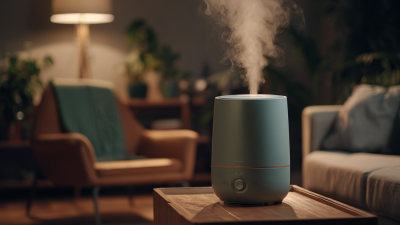
How to Choose the Best Cold Air Humidifier for Your Home Environment





